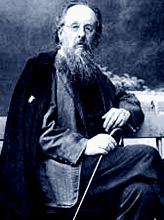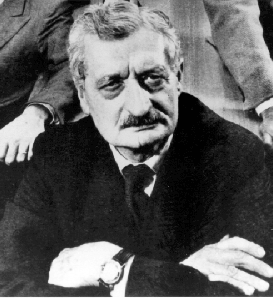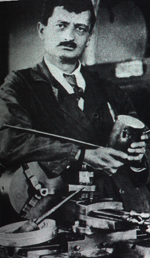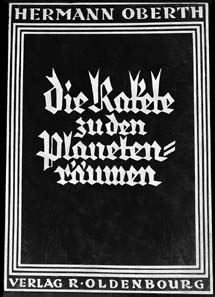The Space Age Turns 50 - Ideas of Space Flight from the Early 20th Century
Three Engineers in Three Countries: Tsiolkovsky, Goddard, and Oberth
The first three decades of the 20th century saw the development of three independent rocket programs. One primarily theoretical, in Russia and the Soviet Union by Konstantin Tsiolkovsky, another in the United States by theoretician and engineer Robert Goddard, and a third, also primarily theoretical, in Germany by Hermann Oberth.
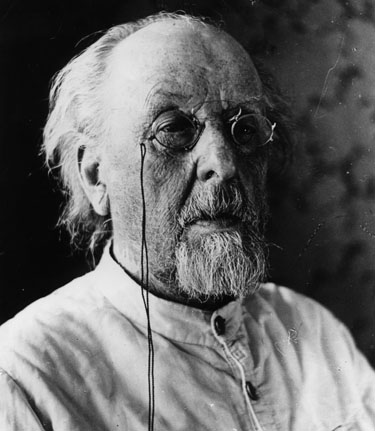
(from: http://www.informatics.org/museum/tsiol.html)
Konstantin Edvardovich Tsiolkovsky was a poor, almost deaf, math teacher in rural Russia.
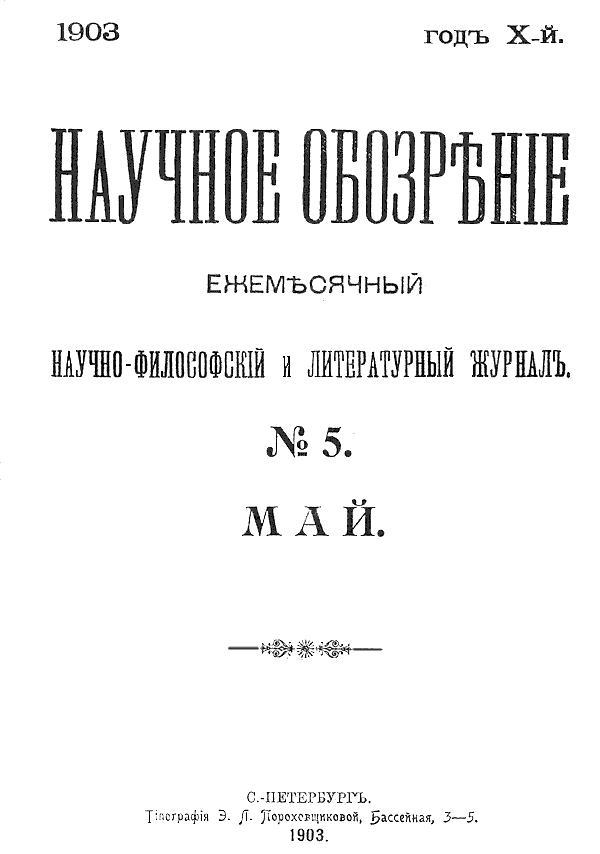
(from:
http://epizodsspace.testpilot.ru/bibl/dorev-knigi/ciolkovskiy/issl-03st.html)
He wrote about the possibility of an artificial satellite in 1895 and further described space flight in articles published in 1903 and 1911.
Using Newtonian mechanics, he calculated the speed necessary to keep a satellite at a given altitude in orbit. In the 1903 work, he stated his rocket equation:
u = ln(M0/M) + u0
where u is the final rocket velocity, v is the velocity of the exhaust gases, M0 and M are the starting and ending masses of the rocket, and u0 is the initial rocket velocity prior to the fuel burn.
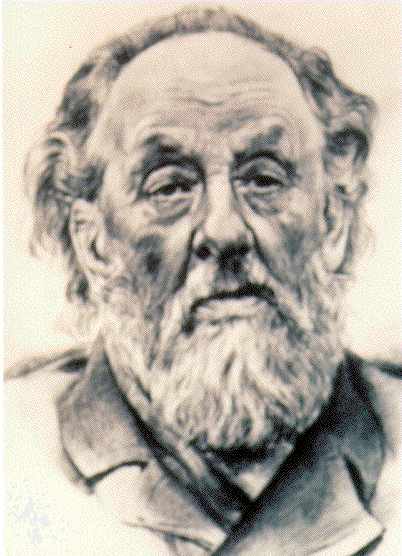
(from: http://history.msfc.nasa.gov/rocketry/18.html)
Tsiolkovsky designed hypothetical space stations and the idea of a multistage rocket which he called a "rocket train."
His work was not widely circulated until after the Russian Revolution. The communist government, wanting to portray itself as technologically progressive, was very supportive of his work. In 1921 he was given a lifetime pension. The Soviet government paid for the publication of 50 of Tsiolkovsky's articles and books. He died in 1935.
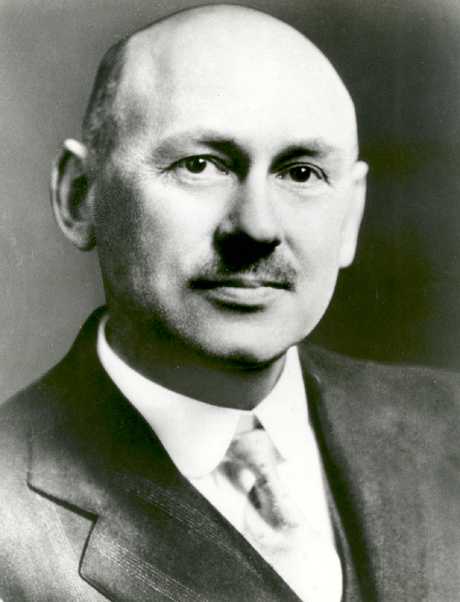
(from: http://www.answers.com/topic/robert-goddard-jpg)
Robert Goddard was born in 1882 in Worcester, Massachusetts.
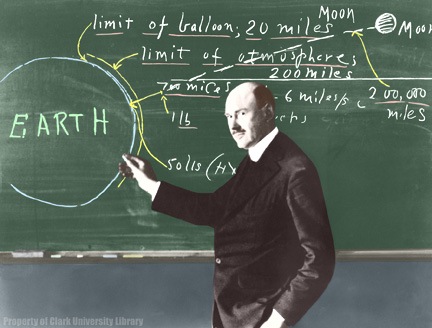
(from: http://www.centennialofflight.gov/essay/SPACEFLIGHT/Goddard/SP3G3.htm)
He earned a bachelors degree in physics from Worcester Polytechnic University and a Ph.D. in physics from Clark University.
He performed his first rocket experiments before the first world war.
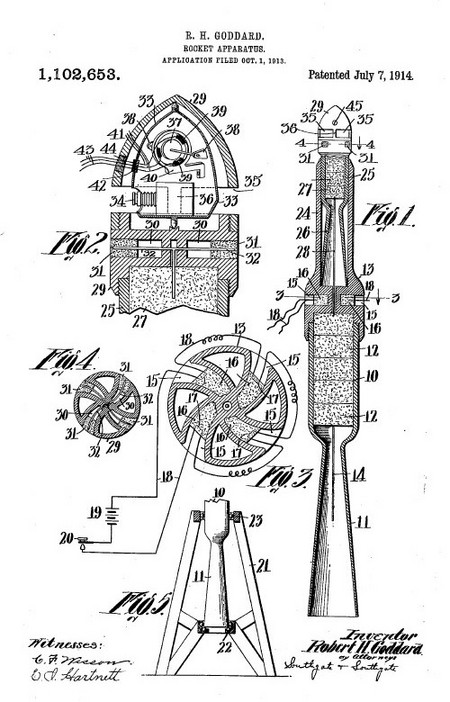
(from: http://patentpending.blogs.com/patent_pending_blog/2004/10/robert_goddard_.html)
He worked at Princeton University and recieved two important patents on solid-fuel rockets in 1914.
The U.S. Army expressed some interest in his work, but after the end of the first World War, the interest dissipated. None-the-less, Goddard continued his experiments, next concentrating on liquid fuel rockets.
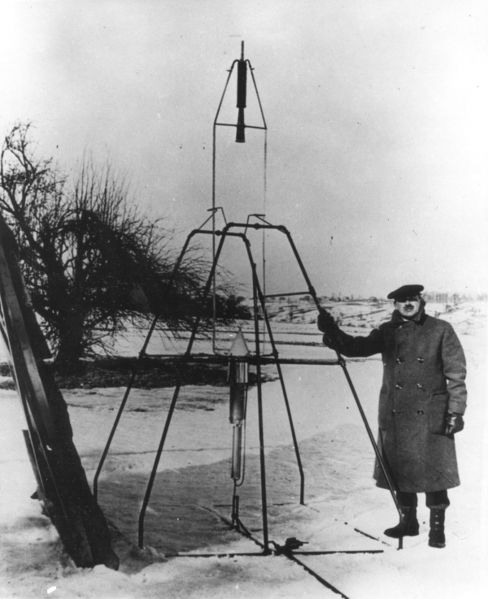
From Wikipedia.
His first launch of a liquid fueled rocket occurred March 16, 1926 in Auburn, Massachusetts. The rocket was 10 feet tall and weighed 10 pounds. It reached a humble height of 40 feet.
A 1926 New York Times editorial belittled Goddard's work and his dreams of launching rockets into space and to the moon.
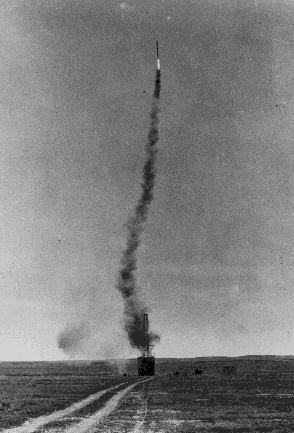
(from: http://www.roswell-nm.gov/VistorCenter/goddard.html)
Following that experience, Goddard continued his work, but was reluctant to share or publicize the results.
He continued quitely working during the 1930s and was eventually able to launch and control some of the most successful rockets in the world at the time.
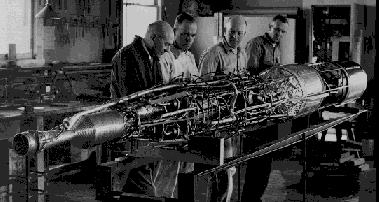
(from: http://www.roswell-nm.gov/VistorCenter/goddard.html)
On the verge of World War II in 1940, Goddard approached the U.S. military and offered to share his rocket research results - the offer was declined. This was not the attitude shared by the military of certain European countries of the time.
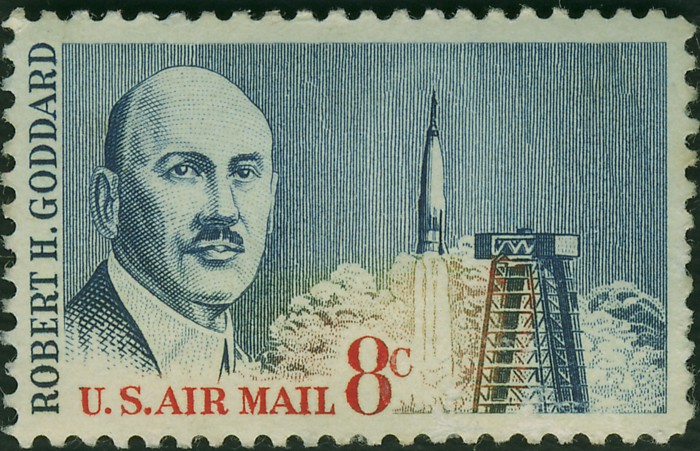
From Wikipedia.
During the second world war, Goddard worked for the Navy on jet assisted take-off rocket boosters.
He died of throat cancer on August 10, 1945. Today, Robert Goddard is recognized as the father of american rocketry and space travel.
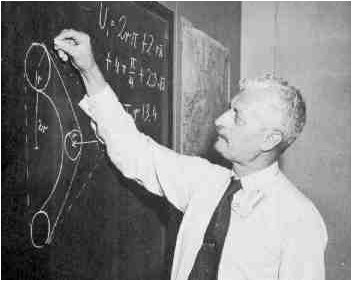
(from: http://www.kiosek.com/oberth/)
Hermann Oberth was born in 1894 in Transylvania. He studied physics and, in 1922, submitted his thesis on rocketry to the University of Heidelberg. The thesis was rejected because rocketry was thought to be a fringe topic.
Images from: http://www.daviddarling.info/encyclopedia/O/Oberth.html
}
Oberth turned the work into a popular book called The Rocket into Interplanetary Space. This was the first technical book on space travel to become popular in the general public.
In fact, Oberth was the technical advisor on the classic 1929 Fritz Lang science fiction movie The Woman in the Moon.
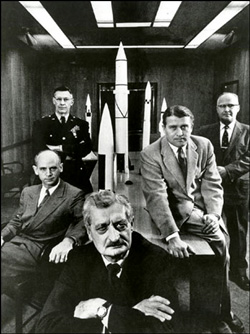
(from: http://www.fathom.com/course/21701743/session1.html)
Oberth did his own experiments with liquid fueled rockets in the 1930s, unaware of Goddard's work. His work involved students from the Technical University of Berlin, including Wernher von Braun. Unlike Tsiolkovsky and Goddard, Oberth lived to see the launching of Earth satellites. In fact, he lived to see man walk on the moon, the launch of the space shuttle, spacecraft land on Venus and Mars, and probes sent to all eight planets. He died in Germany in December 1989.
Go to Wernher von Braun and the V-2 section.
